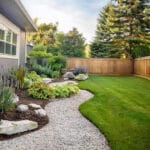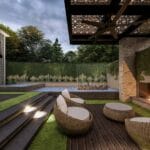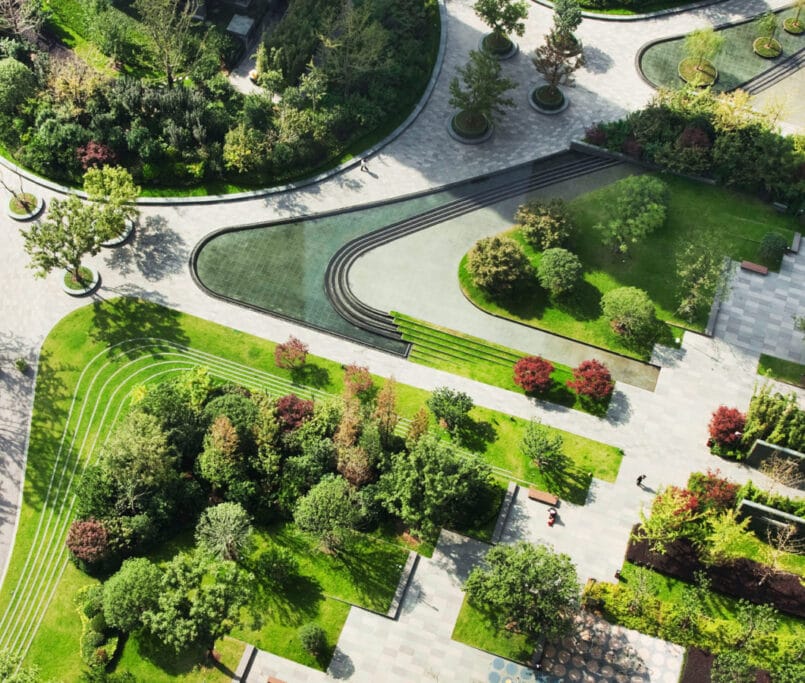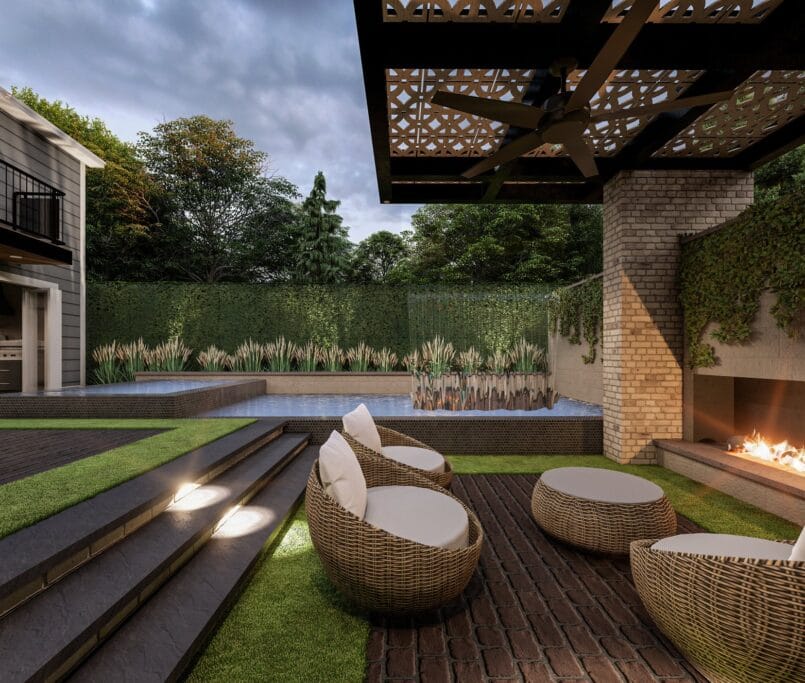What Is Landscape Design and What Does It Include
Your outdoor space is more than just a patch of grass or a collection of plants. It is a living extension of your home that can provide beauty, comfort, and functionality all year round. This is where landscape design comes in. A well-planned landscape design not only enhances the look of your property but also improves its usability and value. Whether you are dreaming of a cozy garden retreat, an inviting entertainment area, or a stunning first impression for guests, understanding what landscape design is and what it includes is the first step toward bringing your vision to life. At Grand Building Construction, we believe that the best landscapes are carefully designed with purpose and creativity in mind.
What Is Landscape Design
Landscape design is the art and science of planning and arranging outdoor spaces to create harmony between natural elements and constructed features. It involves designing gardens, lawns, walkways, patios, lighting, and other elements to achieve both visual appeal and practical function. While landscaping is often associated with the physical installation of plants and features, landscape design is the critical planning stage that comes before this work. It maps out how different elements will work together, ensuring that every choice is intentional and contributes to the overall look and feel. A professional landscape designer considers factors such as climate, soil, sunlight, and how the space will be used, creating a tailored plan that meets the client’s needs and preferences.
Landscape Design vs Landscaping
It is important to understand the difference between landscape design and landscaping. Landscaping refers to the actual implementation—planting shrubs, laying sod, building stone paths, or installing irrigation. Landscape design, on the other hand, is the blueprint for all those actions. It is the master plan that guides every decision. Without this plan, even the most beautiful plants or structures can feel disconnected or impractical. A strong design ensures that the space is both aesthetically pleasing and functional, providing long-term satisfaction and value.
Key Components of Landscape Design
Site Analysis and Consultation
The first step in landscape design is a thorough site analysis. This involves evaluating the property’s soil type, drainage patterns, existing vegetation, light exposure, and slope. A professional designer will also take note of any existing features you want to keep or remove. This stage ensures that the design is grounded in reality and works with, not against, the natural characteristics of the site.
Concept and Design Planning
Once the site has been assessed, the creative process begins. Designers develop concepts that reflect your goals and style preferences, often using sketches or digital renderings to visualize the layout. This stage might include mood boards that capture the desired atmosphere, from modern minimalism to lush, traditional gardens. Every path, plant bed, and seating area is strategically placed to create flow and balance.
Plant Selection and Layout
Choosing the right plants is one of the most important aspects of landscape design. This decision is based not just on appearance but also on how well plants will thrive in your local climate and soil conditions. A thoughtful plant layout considers bloom times, seasonal interest, and maintenance requirements. By combining textures, colors, and heights, a designer can create dynamic, visually interesting landscapes that evolve beautifully over time.
Hardscaping Elements
Hardscaping refers to the non-living features in your outdoor space. These can include patios, walkways, retaining walls, pergolas, decks, and water features. Hardscaping provides structure and functionality, defining different areas and enhancing usability. Well-designed hardscaping complements the plants and ties the whole space together, creating a cohesive environment.
Lighting and Irrigation Systems
A truly functional landscape works well at any time of day. Lighting design enhances safety, highlights key features, and allows you to enjoy your outdoor space after sunset. Irrigation systems ensure plants receive the right amount of water, helping them thrive while conserving resources. These technical elements often go unnoticed when done well, but they are essential for maintaining the beauty and health of the landscape.
Additional Services Often Included
Many professional landscape designers also offer extra services to complete the vision. These can include selecting outdoor furniture that matches the overall style, planning seasonal planting schedules for year-round beauty, and providing detailed maintenance guidelines to help homeowners keep their landscapes looking their best. These value-added services make it easier for you to enjoy your outdoor space without the guesswork.
The Landscape Design Process
The journey from concept to completion usually follows a clear process. It begins with an initial consultation where the designer learns about your goals, lifestyle, and budget. This is followed by site analysis and the creation of a preliminary design. After discussing and revising this plan with you, a final design is approved. The project then moves into implementation, where landscaping crews bring the plan to life. This structured approach ensures that every decision is purposeful and that the final result meets your expectations.
Benefits of Professional Landscape Design
Investing in professional landscape design offers numerous benefits. It significantly boosts curb appeal, making your home more attractive to visitors and potential buyers. It can also increase property value, with well-designed outdoor spaces often offering a strong return on investment. Professional design saves you time and money by avoiding costly mistakes and ensuring that every element is chosen with care. It also supports sustainability by selecting plants and materials suited to your environment, reducing water waste and maintenance needs.
How to Choose the Right Landscape Designer
Selecting the right designer is crucial to achieving your vision. Look for professionals with a strong portfolio that reflects a variety of styles. Read client reviews and ask for references to ensure they deliver quality work. Certifications or memberships in professional organizations can indicate a commitment to industry standards. Most importantly, choose a designer who listens to your ideas and communicates clearly throughout the process.
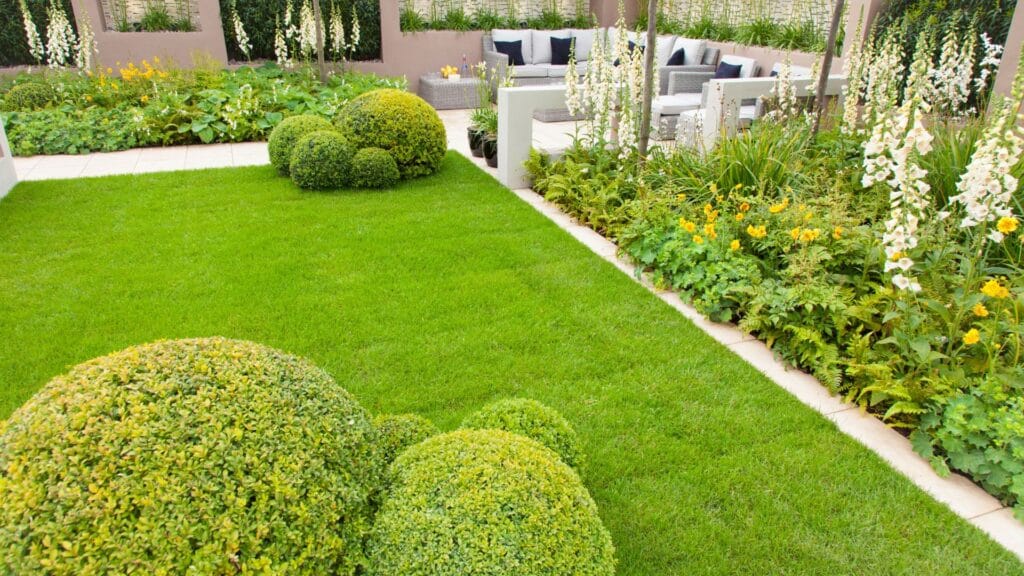
Contact Us For Your Landscaping Project
Landscape design is more than just arranging plants and structures it is the thoughtful creation of an outdoor environment that reflects your style and enhances your lifestyle. From the first consultation to the final installation, every step is an opportunity to bring your dream space to life. At Grand Building Construction, we specialize in designing landscapes that are as functional as they are beautiful. Our expert team is ready to transform your yard into a stunning extension of your home. Contact Grand Building Construction today to schedule your consultation and take the first step toward your perfect outdoor space.

